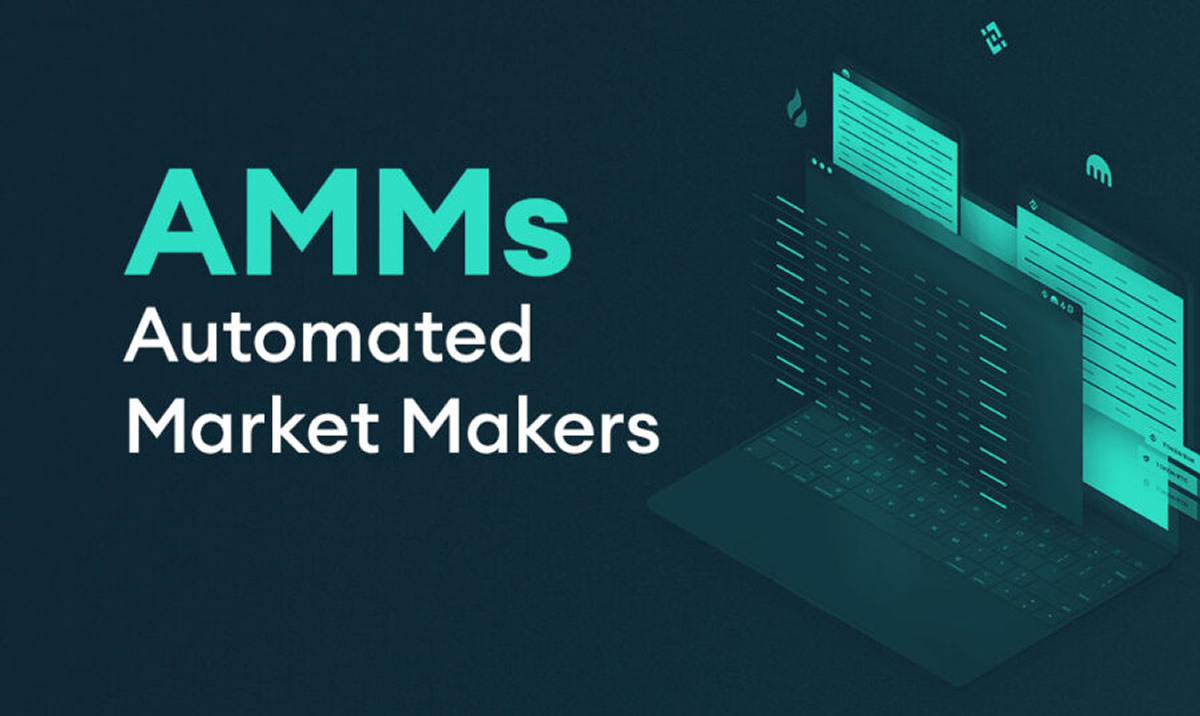
An automated market maker (AMM) is a type of liquidity provider that uses computer algorithms to automatically buy and sell assets in order to provide liquidity to a market.
What are automated market makers?
An automated market maker (AMM) is a type of liquidity provider that uses computer algorithms to automatically buy and sell assets in order to provide liquidity to a market. AMMs are often used in decentralized exchanges (DEXs) to provide liquidity for tradeable assets that are not easily traded on centralized exchanges. The most common type of AMM is a liquidity pool.
A liquidity pool is a shared fund of assets used to pay for trades. When a trade is made, the assets are taken from the pool and redistributed according to the smart contract definition of the pool. This allows trades to be made without the need for a centralized exchange or counterparty. Another type of AMM is the trading algorithm. A trading algorithm is a set of instructions that are followed by a computer program in order to automatically buy and sell assets. Trading algorithms can be used to create liquidity in a market by automatically buying and selling assets in order to profit from Price (US$) differences.
Uniswap is an example of a DEX that uses an AMM. Uniswap is a decentralized exchange that allows users to trade ETH and ERC20 tokens without the need for a centralized exchange or counterparty. Uniswap uses a liquidity pool to provide liquidity for trades. The pool is made up of ETH and ERC20 tokens that are deposited by users. When a trade is made, the tokens are taken from the pool and redistributed according to the rules of the pool.
An automated market maker (AMM) is a type of trading algorithm that provides liquidity to a market by automatically buying and selling assets in order to maintain a consistent Price (US$). AMMs are commonly used in crypto markets, where they can help to provide liquidity for less traded assets. The most common type of AMM is the liquidity pool, which is a collection of funds that can be used to buy or sell an asset. When someone wants to buy or sell an asset, they can do so through the liquidity pool, which will then trade with other users in order to maintain the Price (US$). Another type of AMM is the Uniswap algorithm, which is used to trade between two different assets.
This algorithm is designed to keep the Price (US$) of the two assets equal, and will automatically buy or sell one asset in order to maintain this balance. Finally, there are also algorithms like Curve and Balancer that allow users to trade between multiple assets. These algorithms keep track of the Price (US$)s of all the assets they are trading, and will automatically buy or sell assets in order to maintain a balanced portfolio.
An automated market maker (AMM) is a type of market maker that uses algorithms to provide liquidity in a market. AMMs are commonly used in decentralized exchanges (DEXes), where they provide liquidity for trades by buying and selling assets in a pool. AMMs use a variety of algorithms to manage their liquidity pools, including Uniswap, Curve, and Balancer. GSR is a popular AMM trading platform. AMMs provide an important service in the cryptocurrency ecosystem by ensuring there is always liquidity available for trades. They also help to keep Price (US$)s stable by buying and selling assets as needed to maintain equilibrium in the market.
When it comes to automated market making (AMM) on decentralized exchanges (DEXs), there are a few different ways that this can be achieved. One popular method is through the use of liquidity pools, where trades are executed against a pool of tokens rather than other order book orders. Another popular method is through the use of algorithms, such as Uniswap or Curve, which execute trades automatically based on pre-determined rules. Finally, there are also platforms like Balancer and GSR that offer AMM services by connecting multiple liquidity providers together.
A liquidity pool is a shared fund of assets used to pay for trades. When a trade is made, the assets are taken from the pool and redistributed according to the smart contract definition of the pool. This allows trades to be made without the need for a centralized exchange or counterparty. Another type of AMM is the trading algorithm. A trading algorithm is a set of instructions that are followed by a computer program in order to automatically buy and sell assets. Trading algorithms can be used to create liquidity in a market by automatically buying and selling assets in order to profit from Price (US$) differences.
Uniswap is an example of a DEX that uses an AMM. Uniswap is a decentralized exchange that allows users to trade ETH and ERC20 tokens without the need for a centralized exchange or counterparty. Uniswap uses a liquidity pool to provide liquidity for trades. The pool is made up of ETH and ERC20 tokens that are deposited by users. When a trade is made, the tokens are taken from the pool and redistributed according to the rules of the pool.
An automated market maker (AMM) is a type of trading algorithm that provides liquidity to a market by automatically buying and selling assets in order to maintain a consistent Price (US$). AMMs are commonly used in crypto markets, where they can help to provide liquidity for less traded assets. The most common type of AMM is the liquidity pool, which is a collection of funds that can be used to buy or sell an asset. When someone wants to buy or sell an asset, they can do so through the liquidity pool, which will then trade with other users in order to maintain the Price (US$). Another type of AMM is the Uniswap algorithm, which is used to trade between two different assets.
This algorithm is designed to keep the Price (US$) of the two assets equal, and will automatically buy or sell one asset in order to maintain this balance. Finally, there are also algorithms like Curve and Balancer that allow users to trade between multiple assets. These algorithms keep track of the Price (US$)s of all the assets they are trading, and will automatically buy or sell assets in order to maintain a balanced portfolio.
An automated market maker (AMM) is a type of market maker that uses algorithms to provide liquidity in a market. AMMs are commonly used in decentralized exchanges (DEXes), where they provide liquidity for trades by buying and selling assets in a pool. AMMs use a variety of algorithms to manage their liquidity pools, including Uniswap, Curve, and Balancer. GSR is a popular AMM trading platform. AMMs provide an important service in the cryptocurrency ecosystem by ensuring there is always liquidity available for trades. They also help to keep Price (US$)s stable by buying and selling assets as needed to maintain equilibrium in the market.
When it comes to automated market making (AMM) on decentralized exchanges (DEXs), there are a few different ways that this can be achieved. One popular method is through the use of liquidity pools, where trades are executed against a pool of tokens rather than other order book orders. Another popular method is through the use of algorithms, such as Uniswap or Curve, which execute trades automatically based on pre-determined rules. Finally, there are also platforms like Balancer and GSR that offer AMM services by connecting multiple liquidity providers together.




